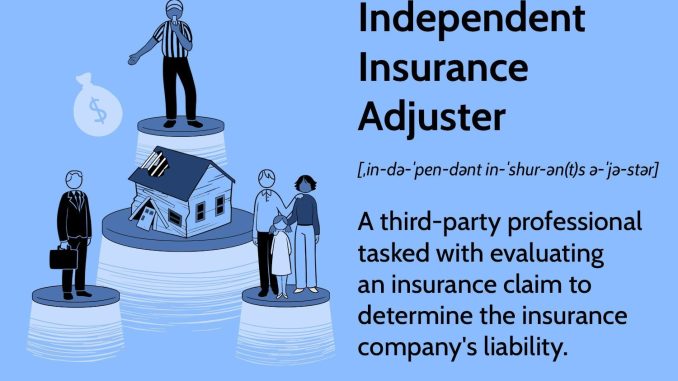
When unforeseen circumstances disrupt life – be it a car accident, a sudden illness, or damage to property – the path to recovery often hinges on an insurance claim. While the policyholder focuses on immediate needs, a critical figure quietly steps in to assess the situation and determine the appropriate financial compensation: the insurance adjuster. Often operating behind the scenes, the insurance adjuster plays a multifaceted and pivotal role, acting as the primary liaison between the insurance company and the claimant, meticulously investigating losses, and ultimately facilitating the settlement process. Understanding their function is crucial for anyone navigating the complexities of an insurance claim.
At its core, the insurance adjuster’s primary responsibility is to **investigate, evaluate, and negotiate** insurance claims to determine the insurer’s liability and the fair value of the loss covered under a policy. This involves a comprehensive fact-finding mission. For a car accident, an adjuster might visit the scene, inspect vehicle damage, review police reports, interview witnesses, and gather medical records if personal injury is involved. For a property damage claim, they might physically inspect the damaged home or business, assess the extent of the destruction, take photographs, and collect estimates for repairs or replacement of damaged items. Their objective is to piece together a clear picture of what happened, how it happened, and what damages are directly attributable to the insured event.
A crucial aspect of their role is **determining policy coverage**. It’s not enough to simply assess the damage; the adjuster must meticulously review the claimant’s insurance policy to ascertain if the loss falls within the terms and conditions of their coverage. This involves checking for exclusions, policy limits, deductibles, and any specific clauses that might apply to the situation. For instance, a property adjuster might confirm that a flood claim is covered only if the policy specifically includes flood insurance, which is often separate from standard home insurance. This step ensures that the claim aligns with the contractual agreement between the policyholder and the insurance company, preventing payouts for events not covered by the policy.
Insurance adjusters come in various forms, each with a slightly different relationship to the policyholder and the insurer. The most common are **staff adjusters**, who are direct employees of an insurance company. They handle claims on behalf of their employer and adhere strictly to company guidelines and policies. Then there are **independent adjusters**, who are freelance contractors hired by insurance companies, often when there’s a high volume of claims (such as after a natural disaster) or when a claim requires specialized expertise in a remote area where the insurer doesn’t have a local office. While independent, they still represent the interests of the insurance company that hired them. A third, distinct type is the **public adjuster**, who is hired directly by the policyholder. Unlike staff or independent adjusters, a public adjuster advocates *solely* for the claimant, helping them prepare and negotiate their claim to secure the highest possible settlement. This option is often considered in complex or high-value claims where the policyholder feels their interests are not being adequately represented by the insurer’s adjuster.
Beyond the initial investigation and coverage determination, a significant part of the adjuster’s job involves **negotiation and settlement**. Once they have assessed the damage and determined the coverage, they will typically present a settlement offer to the claimant. This offer is based on their evaluation of the loss, repair costs, and policy terms. It’s here that the adjuster’s negotiation skills come into play, as they aim to reach a fair settlement that aligns with the insurer’s financial obligations while also satisfying the policyholder. This process can sometimes involve multiple rounds of discussion, especially if there are discrepancies in estimates or differing opinions on the value of the damage. An adjuster also plays a role in identifying and pursuing **subrogation opportunities**, where the insurer can recover money paid out on a claim from a responsible third party.
In many instances, the insurance adjuster also acts as a crucial point of contact, providing updates on the claim’s status, explaining policy provisions, and guiding the claimant through what can be a confusing and stressful process. While their primary allegiance is to their employer (for staff and independent adjusters), a professional adjuster strives to maintain transparency and facilitate a smooth claims experience. Their role demands a blend of analytical skills, attention to detail, strong communication abilities, and often, empathy, as they interact with individuals often experiencing distress due to a loss.
Ultimately, the insurance adjuster is an indispensable cog in the insurance machinery. They bridge the gap between an unforeseen event and the financial resolution provided by an insurance policy. By thoroughly investigating claims, interpreting policy language, and negotiating fair settlements, they ensure the integrity of the insurance system, providing vital financial relief to policyholders while protecting the financial health of the insurer. For anyone facing a claim, understanding the adjuster’s role, and being prepared to provide clear, complete information, can significantly streamline the process and lead to a more satisfactory outcome.